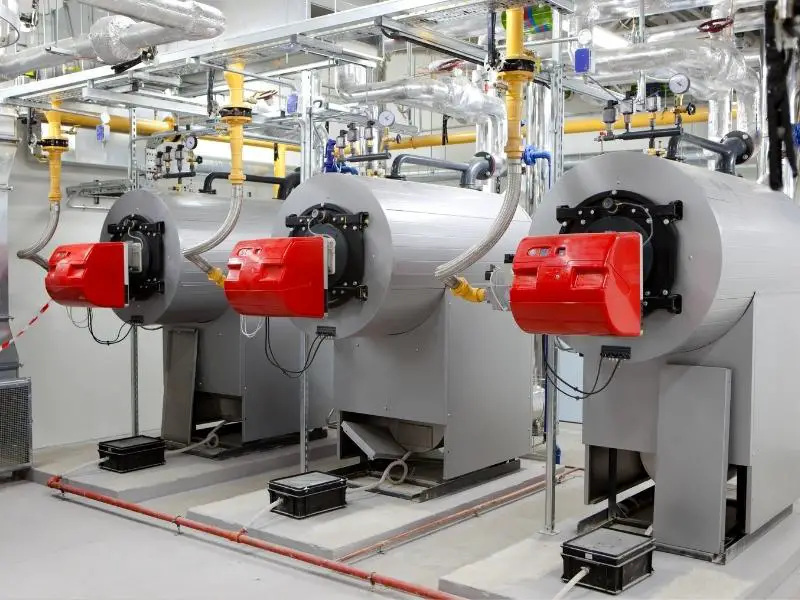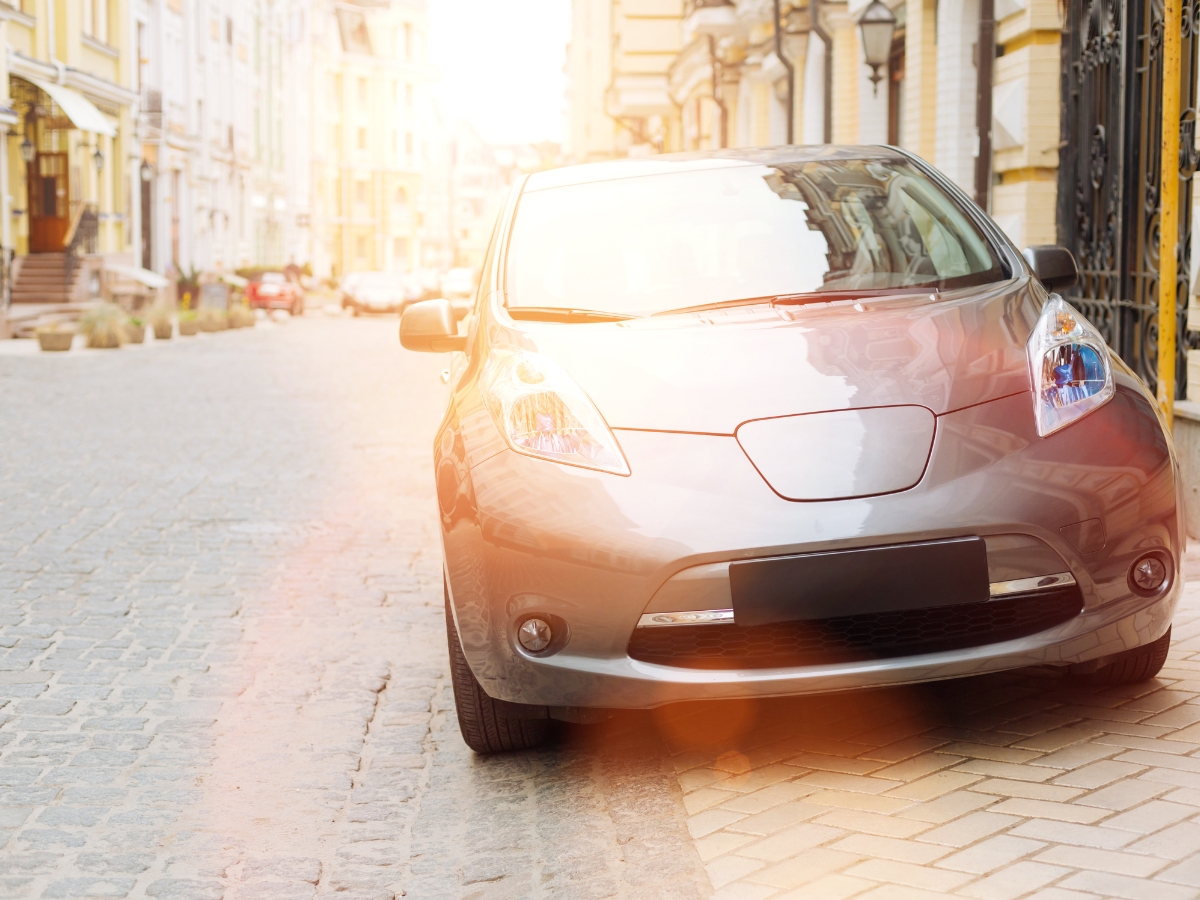Generators can be configured to generate an alternating current (AC) or a direct current (DC) of electricity. Faradays the Law of Induction is the principle on which both AC and DC generators operate to generate electrical potential. There are advantages and disadvantages to both AC and DC generators.
- The most common generators in domestic and commercial use are AC generators.
- AC generators are more fuel-efficient and require less maintenance than DC generators.
- In specific heavy-duty applications like subway power systems, DC generators may be more advantageous.
In AC Generators, the coil remains static, and the magnetic field rotates about the coil inducing an alternating current in the conductor. The basic design of a DC generator is such that the coil rotates through a stationary magnetic field.
The DC design is more complex and less efficient than the AC design. Let’s look at the fundamental differences between AC and DC generators.

What Are The Differences Between AC And DC Generators?
AC and DC generator designs make use of Faradays Law to convert mechanical energy into electrical power. In an AC generator, the power is fed via contact rings resulting in alternating current flow. A DC generator has separated commutators that rectify the electrical current into a direct current.
The induction of electrical flow is caused by changing magnetic field or magnetic flux. Suppose the ends of the loop are connected to two separate contact rings, and the loop is rotated between two magnetic poles.
In that case, a current is induced that alternates in direction as the two sides of the loop experiences the changing magnetic field due to its mechanical rotation.
This is how AC or alternating current is generated. The advantage of AC is that it can be transmitted over very long distances, for example, from power stations to our homes. Power delivered to our houses is 120V AC with a frequency of 60 Hz.
Domestic Appliances
Most modern domestic appliances are designed to work with AC power supply and can thus be run directly off the grid power without conversion. Devices that require DC power are routed via a rectifier that will convert the AC to DC as needed.
A DC generator has the ends of the loop connected to a split-ring commutator designed always to let the induced current flow in one direction.
When a split-ring commutator is used, it makes the current change its direction after every alternate half-cycle. It reverses the current direction after every half rotation, which helps maintain the current in a positive half-cycle.
The AC and DC generators are virtually identical in design. Still, the difference is how the split-ring commutators allow the current to flow uniformly in one direction. In contrast, the separate continuous ring contacts of the AC generator cause the direction of the induced current to alternate.
What Type Of Generator Do I Need?
As our electrical supply grid is based on AC supply to homes and businesses, you will most likely need an AG generator as a backup power supply. A standby AC generator can be connected to your house that will kick on automatically when the grid power supply is disrupted.
With an AC generator, you will be able to keep your refrigerator, freezer, and lights working during a power outage. Large AC generators can power your entire home, including power-hungry devices like the water heater, oven, and air conditioner.
Large AC generators are expensive and maybe a poor investment if you only experience occasional power disruptions of short duration.
DC Generators
DC generators are used to supply a constant supply of electrical current in an extensive output range. They are used to charge batteries, power lighting plants, and provide excitation power for alternators. The speed can be varied by adjusting the current flow, and they are ideal for DC motors in fans.
DC generators are also used in arc welding, where a large voltage drop and a constant current are required. It is unlikely you will have much need for a DC generator in a domestic application as most home appliances and tools have been designed to operate using AC power.
What Is The Difference Between Generators And Motors?
Generators make use of the rotational mechanical force (Wind Farms or Hydro Eclectic Dams) to generate an electric current. An electric motor uses an electrical current to create an electromotive force in a conductive loop causing the loop to rotate and spin an axle.
The mechanical force can be supplied by moving air in the case of a wind turbine generator or by water flowing through a turbine in a hydroelectric dam, for example. The rotation caused by the airflow or water flow is used to rotate a conductive loop through a magnetic field, thus generating an electric current.
DC motors are ideally suited in applications where the current strength will control the speed of rotation. DC motors are thus ideal for use as fan motors as they are quiet, energy-efficient, and suitable for controlling the speed of the fan blades.
Efficiency Motors
The development of highly efficient AC and DC motors has been at the center of energy-efficient electric vehicles. Leading EV Company Tesla has experimented with both types of motors in their cars. The Model S uses an AC induction motor, but the Model 3 uses a permanent magnet DC motor.
There are advantages to both types of motors, but induction motors are less efficient than permanent-magnet motors at full load. Permanent-magnet motors are also smaller and lighter than their induction counterparts.
Although it’s possible to get tremendous performance from induction motors (the top-performance Model S variants, for example), permanent-magnet motors are considered better.
Most Generators
Most generators made for home use are AC generators as these generators supply the electricity in the same format the power utility companies. AC generators also require less maintenance and have a more straightforward conversion process.
DC generators are less common, but they are necessary for instances where a stable direct current is needed, such as when charging batteries.
References:
- https://byjus.com/physics/difference-between-ac-and-dc-generator/
- https://youtu.be/bHIhgxav9LY – Big Misconception About Electricity
- https://youtu.be/Y18N-hi5P1o – Faradays Law
- https://youtu.be/gQyamjPrw-U – Working Principle of an AC Generator
- https://www.powerplus.com/industrial-power-blog/ac-vs-dc-backup-generators-whats-the-difference/
- https://en.wikipedia.org/wiki/Mains_electricity_by_country
- https://www.motortrend.com/news/electric-cars-explained-gearheads/




